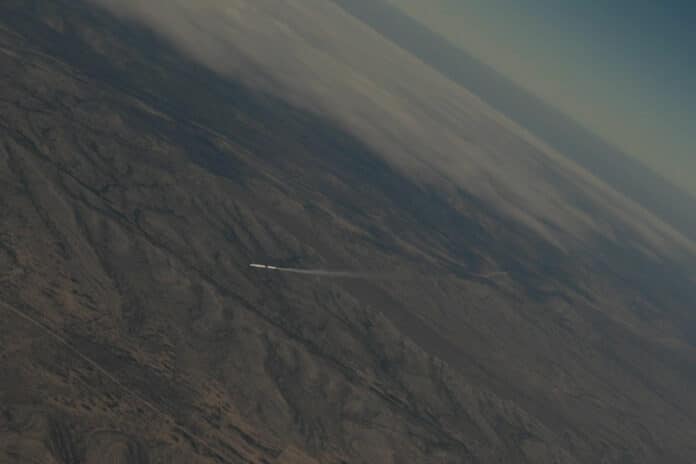On February 24, 2024, Venus Aerospace’s supersonic flight test drone completed its first successful flight using its rotating detonation engine (RDE).
Many countries are investing in RDEs due to their high thermodynamic efficiencies and compact design. However, RDEs operate differently from traditional rocket engines, which rely on combustion chambers to produce an exhaust plume. RDEs use a wave of detonation that travels through a circular channel, maintained by fuel and oxidizer injection.
Venus Aerospace is working with DARPA to develop a hypersonic technology testing device. The drone weighed 300 pounds (136 kg) and was eight feet long. It was dropped at an altitude of 12,000 feet (3,658 meters) and reached a top speed of Mach 0.9 while flying for ten miles.
This feat was achieved using a hydrogen peroxide monopropellant engine at 80% thrust to avoid exceeding Mach 1. The test demonstrated various aspects of the drone’s capabilities, such as flight controls, stability, telemetry, ground operations, and air launch. Additionally, the drone’s propulsion system, which includes the ultimate Rotating Detonation Rocket Engine (RDRE), was tested successfully.
The drone was dropped from an Aero L-29 Delfín aircraft, but the engine did not undergo full thrust during testing due to range limitations.
“Using an air-launched platform and a rocket-with-wing configuration allows us to cheaply and quickly get to the minimum viable test of our RDRE as a hypersonic engine. The team executed with professionalism and has a wealth of data to anchor and tweak for the next flight,” says CTO & Co-Founder Andrew Duggleby.
“This is how you do hard things: one bite at a time. Up next is the RDRE flight, and ultimately, the hypersonic flight, proving that the RDRE is the engine that unlocks the hypersonic economy,” says CEO & Co-Founder Sarah “Sassie” Duggleby.
Venus Aerospace is confident that it can combine its RDE tech with air-breathing technology, which involves using the engine’s forward motion to ingest air for combustion. This could result in a rocket-based combined cycle engine that offers excellent performance across a wide range of altitudes and velocities. Although this idea has mainly been theoretical, Venus is now taking steps to make it a reality.
